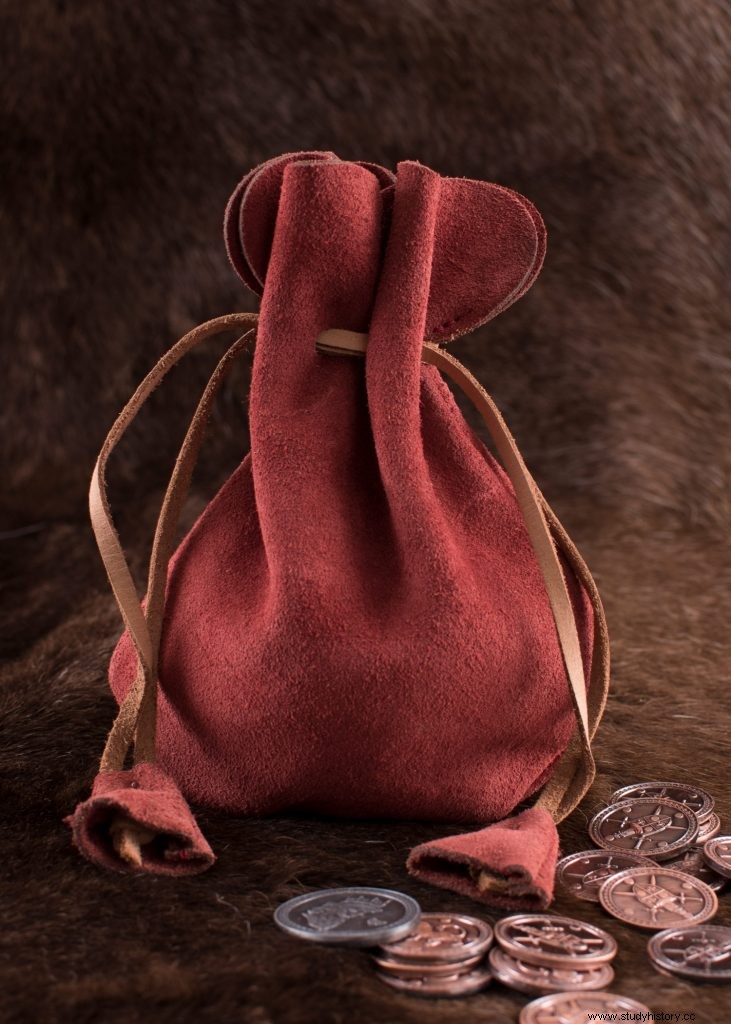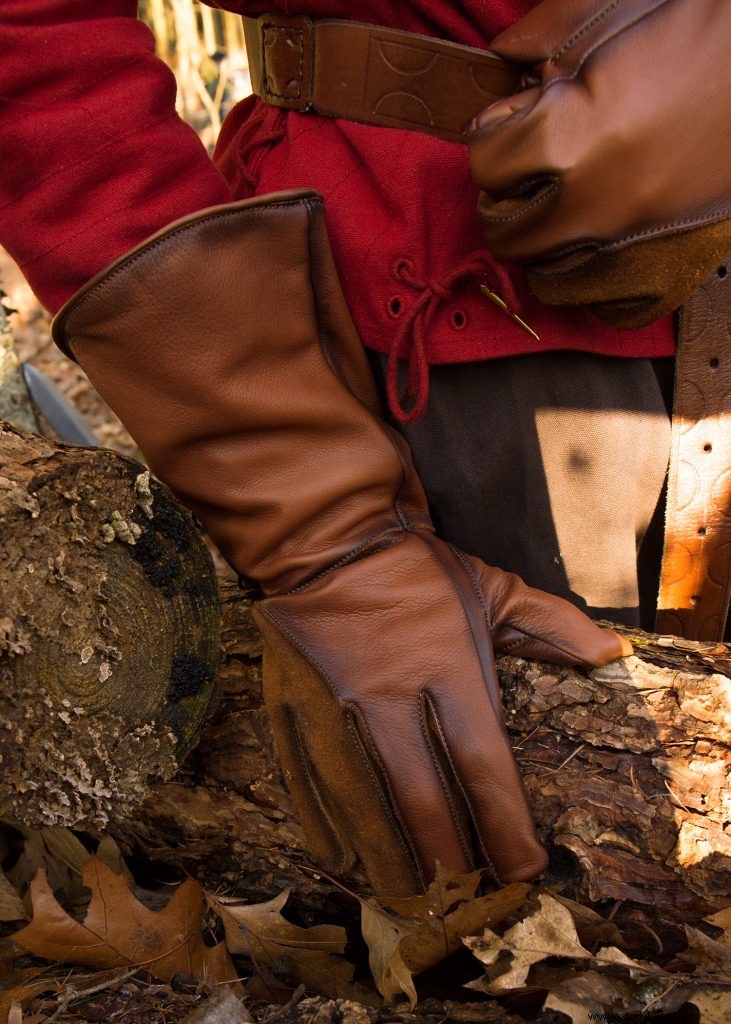Humans have used skins and skins to make clothing and other objects for thousands of years. Animal skins were probably used as a by-product of hunting as early as the Stone Age and were made more durable by smoking or fats. Leather was also of great importance to people in the Middle Ages.
Leather and tanneries in the Middle Ages
In the Middle Ages, animal skins were not only used for the production of clothing, but also for various everyday objects. During the Middle Ages, the word "leather" referred to tanned animal skins in general, i.e. both the leather we know today and tanned hide. In the Middle Ages, tanneries were of great importance and existed in large numbers throughout Europe. Leather workshops were set up near cities and monasteries, often in their own districts near the river or on the outskirts of the city. Tanning was a dirty trade and had a reputation for being an impure craft. At work, tanners were at risk of contracting diseases such as anthrax from contaminated animal skins. From the 14th century, leather production and leather processing were separated from one another, since the guild system regulated tanning from that point on. As a result, specialized professions emerged – for example, white tanner, red tanner, chamois tanner and fur dresser. Certain regions of Germany often specialized in specific types of leather during the Middle Ages. For example, leather for shoe soles was produced in northern Germany, colored leather in Offenbach and patent leather in Worms and Mainz.
The tanning process
Tanning is the processing of animal skins into leather. This working process leads to increased resistance to water and rot. For this purpose, tanning agents are still used today, which convert the protein fibers of the skin into leather fibers. This stabilizes the structure of the skin and creates hard-wearing, durable leather. Tanned leather is protected against self-degradation by microorganisms and has higher resistance to water and heat. The animal hide becomes stretchy and firm at the same time through tanning - the higher the quality of the respective hide, the better the result after tanning. The tanning processes used today have a long history, dating back to the Middle Ages. To this day, tanning is the common method of preserving animal hides and skins and preparing them for use. Today, as in the Middle Ages, a distinction is made between different tanning processes:for example vegetable tanning with vegetable tanning agents, tan or red tanning, alum or white tanning, chamois tanning, chrome tanning and various combination tanning that combine different methods.

Wide leather belt

Small leather pouch

Leather leg guards
The tanning process in the Middle Ages
The tanning process in the Middle Ages was a complex, multi-stage work process. After skinning the animal, the skins were trimmed and those parts that were not suitable for making leather were sorted out. The skins were then either preserved in salt, dried or processed immediately. First of all, all disturbing components of the skin were removed - for example hair, fat and subcutaneous connective tissue. The hides were then placed in water for cleaning, where they regained their original water content. This work step was referred to as a switch. The skin was then placed in the so-called liming for a few hours to days in order to loosen up the fiber structure with milk of lime and to remove the hairy epidermis. The skin that was softened and depilated after this step was called a pelt. In a subsequent step, the skin on the tanning tree was fleshed out. Any remnants of organic tissue still clinging to it were removed by mechanical work. Then only the skin remained, which was now ready for the actual tanning process.
The waste materials produced during the work process were processed into gelatine or hide glue. The dermis was then placed in the descaler where the milk of lime was removed to restore the natural pH of the skin. This step was a prerequisite for the tanning agents to be able to penetrate the skin well in the next step. There was a large number of different tanning agents that required different tanning processes. In fat tanning, also known as chamois tanning, tanning oils such as brain matter or tallow were worked into the hides by hand. The leather treated with the oil then had to be dried, then washed out, dried again and then made supple by fulling. In tanning, red tanning and vegetable tanning, for example, bark tanning agents, chestnut and oak wood were used to produce tanning tan. Before tanning, the ingredients were ground in a tanning mill and leached with water before the skins were treated with it. In the so-called tanning pit, the animal skin was sometimes tanned in the tanning liquor for several weeks to months. Some of the tanning liquor had a high acid content and gave off an unpleasant odor and unhealthy gases.

Leather gauntlet

Pirate Cross Strap

Leather Gloves
Leather articles in the Middle Ages
The tanned leather was mostly processed into clothing in the Middle Ages and played a major role in people's everyday lives. In addition, the leather was often processed into shoes or bags, but also into everyday objects such as saddles and belts, book covers, knife edges and grip straps, drum skins or armor parts. Some helmets were made from the tanned animal skins, but also work clothing such as leather aprons for blacksmiths. Untanned leather was often made into parchment paper. During the Middle Ages, animal skins were sometimes even used as a means of payment due to their high value - this early form of money was referred to as fur money. Leather bags played a special role in the Middle Ages, as they were often used for cooking. Heated stones and food such as meat, herbs and vegetables were thrown into a leather bag filled with water. In this way, a soup in a leather pouch was created quickly and easily. Leather products were mainly made locally or regionally during the Middle Ages. Leather was particularly valued for its strength and resistance to weathering, making it an indispensable material for the manufacture of various items essential to people's lives.
